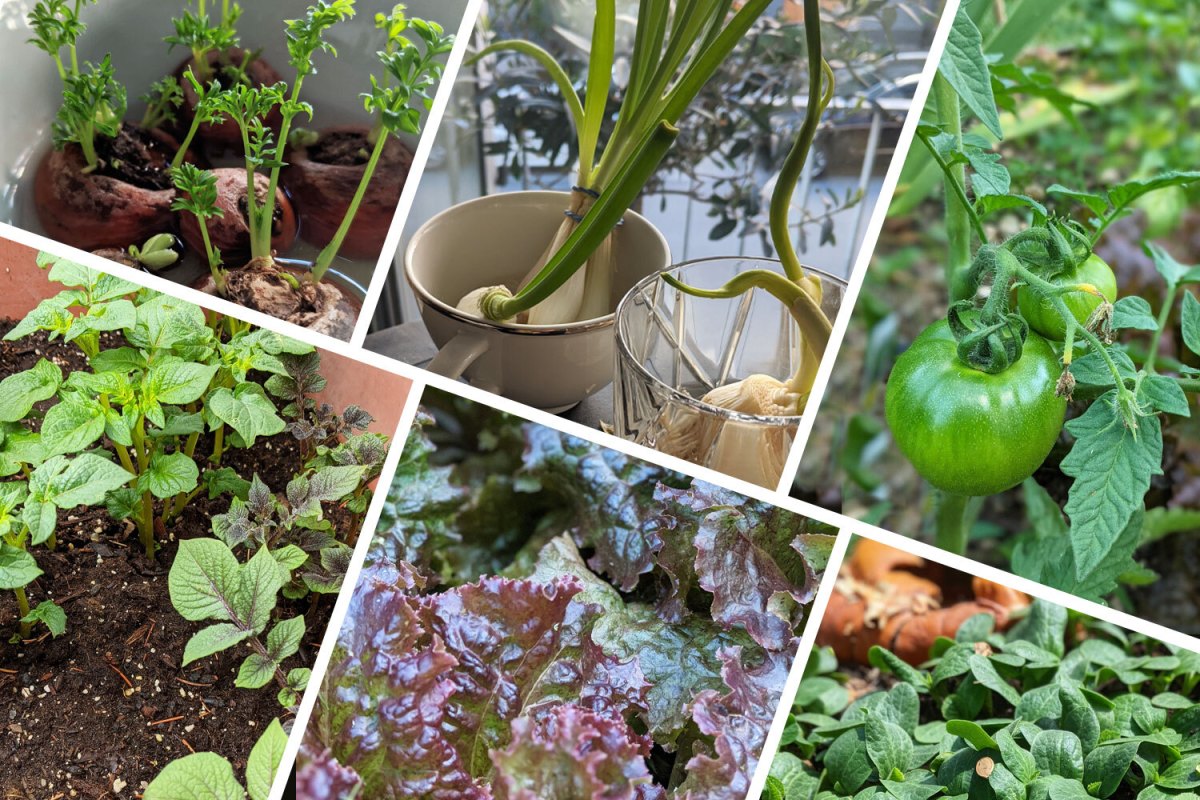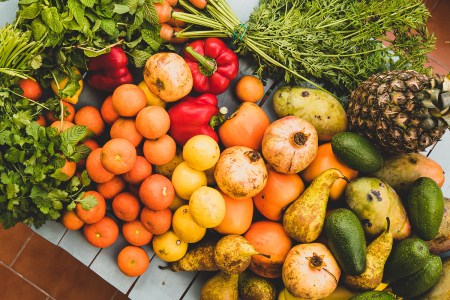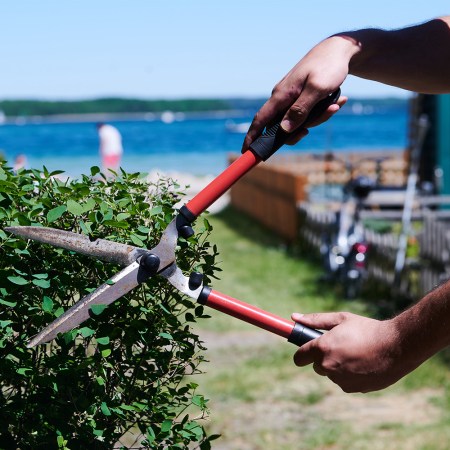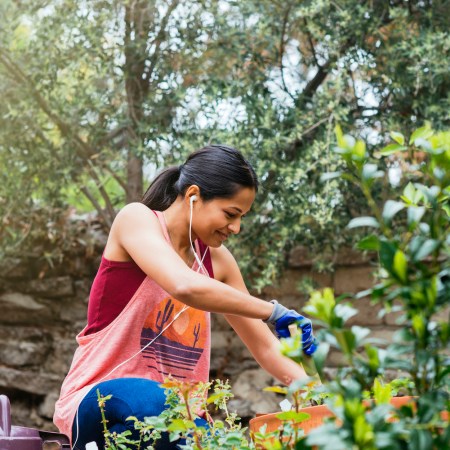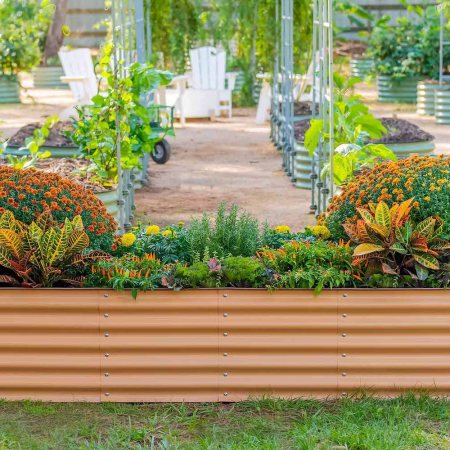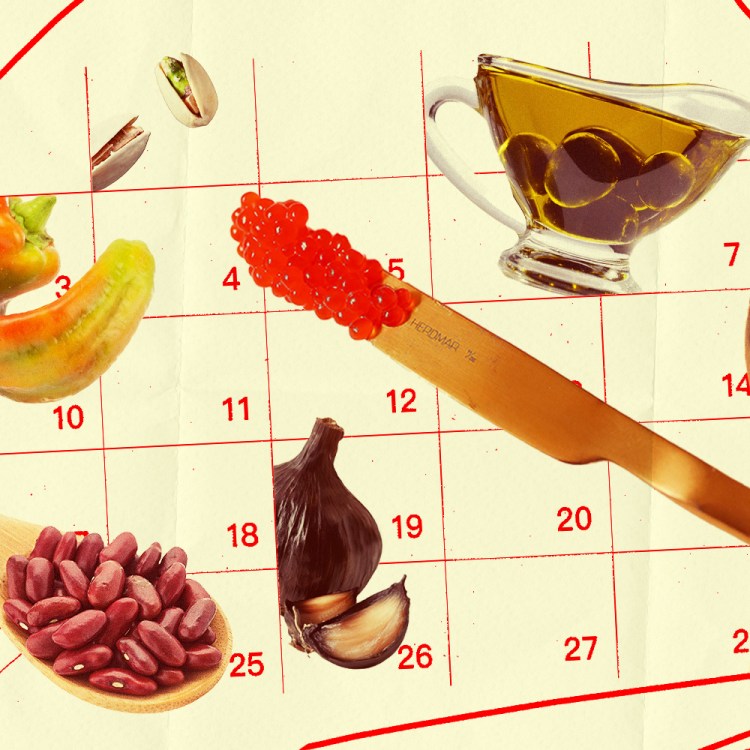Gardening is difficult work. Not only is it physically intense, but getting plants to actually grow and thrive is no easy task — especially if you’re new to the practice. But if you’ve ever wanted to try your hand at spring gardening, this year is the time to take the plunge. Not only is growing your own food one of the most satisfying and delicious skills a human can have, but learning how to do it well is a lifelong process, which is no doubt good for the mind. To help you get started, we connected with multiple gardening professionals to give us their expert advice, from compost to gear and everything in-between.
2024 Spring Gardening Trends to Consider
Classic Plants With Alternative Colors
It’s a simple pleasure, but we still get excited about seeing purple carrots, white eggplant and wildly striped heirloom tomatoes. And according to Micah Merrifield, the farm director at Seed Savers Exchange, people are looking to diversify their gardens with classic produce that grows in striking colors. “I’ve recently been super enthusiastic about a particular type of basil called dark opal basil,” he says. “I love the classic, large-leafed Italian basil — like Genovese — and there are so many different kinds like lemon and Thai. But I love the classic, and the dark opal is strikingly purple and grows super vigorously, but it has that same flavor.”
If you’re looking for other alternative color varieties, try purple or yellow “green” beans, white strawberries, green striped eggplant, bold red lettuce, and peppers of all shapes and hues.
Seed Saving
If you’re a more experienced gardener who really wants to try something new this year, seed saving can be a fun and fulfilling challenge. “As long as it’s an open-pollinated, hopefully heirloom variety — meaning it was bred naturally — so those seeds will be viable,” Merrifield says. “Then, if you choose, you can hold those seeds back and they’ll be true to type, if you don’t have another similar one [growing] next to it.”
If you want to get started, Merrifield suggests The Seed Garden: The Art and Practice of Seed Saving, an award-winning book that was published by Seed Savers Exchange. Organizations like Seed Savers are in the business of collecting, storing, regenerating and distributing heirloom seeds, so their book is an expert tool for anyone looking to try it out.
Food as Holistic Medicine
Yes, fresh fruits and vegetables are nourishing in their own right, especially if you’re growing them organically at home. But deliberately planting things for holistic health is another trend that Merrifield expects to become more popular this year. And these could be a number of things that work for your particular lifestyle. Chamomile is great for digestion, lavender can help you relax, and goji berries are packed with vitamins and minerals.
Companion Planting
You may be familiar with the three sisters, the trio of corn, beans and squash that is a core component of Indigenous American cuisine. There’s a reason why native peoples planted these three crops together because they work with one another to thrive. This practice is called companion planting, and it’s a technique that Merrifield thinks home gardeners will be trying out this year.
“Not every plant is a great companion, and we don’t want plants to battle for sun space or root zone,” he says. “But in addition to corn, bean and squash, basil and peppers grow very well side by side. You can do this anywhere, even in a container — at least 15 gallons — on your deck in the city.”
Farmer’s Almanac has some good spring gardening suggestions for companion planting. For example, parsley entices beneficial insects to tomatoes and nasturtiums attract bugs away from brassicas like cabbage.
Soil, Fertilizer and Compost
Whether you’re growing your garden in the ground or in raised beds, you have to make sure your soil has good drainage. Ben Pauly, master gardener at Woodstock Inn & Resort, says that you can buy blocks of coconut fiber or peat to mix with your soil, but potting soil is a good bet, especially for beginners. “Potting soil is full of peat, coco fiber, perlite and even wood chips, which provide a certain amount of drainage,” he says.
As always with spring gardening, organic is best. Merrifield mentions the “living soil” approach, which is another trend he sees being implemented in at-home growing more often. “Just like probiotics are good for your tummy, your soil will really benefit from that, too,” he says. “You don’t want to burn either with chemicals. Chemical pest control and fertilizers use heavy metals and salts to get those nutrients in a water-soluble form that the roots can drain. So if you use that, the plant gets a short-term nutrient boost, but at the cost of their gut health, so to speak.”
This means using fertilizer made with organic materials rather than the commercial, chemical stuff like Miracle-Gro. “Fish and seaweed fertilizers like Neptune’s Harvest (and there are other ones out there) have a slew of nutrients in them and can help give your plants a boost, even mid-season,” Pauly says.
Along with quality soil and organic fertilizer, compost is one of the absolute best things you can do for your plants. We understand it’s daunting — stockpiling smelly food scraps that will somehow break down into nutrient-rich plant food without knowing anything about it. But compost is so good for a garden, you should just give it a try and not worry too much. “I’m sure some compost pros would say there’s a million mistakes, but I’m saying just get into it, start composting and think about the details and dial it in as you go,” Merrifield says. “It’s very accessible to get started.”
“The best thing you can do for your gardening is adding compost,” Pauly says. “The bare minimum is a quarter inch, but really having an inch or two on top helps you increase your organic matter, soil nutrition and drainage — it’s really what improves your soil structure and creates life. There’s really no substitute. And compost that you make is rich with all those microbes, whereas composts you buy in a bag tend to be a bit more sterile.”
Learning to compost takes time and energy, but the payoff is worth it when you see the benefit it brings to your garden. “The more you do it and the more you learn about it, the more fun it becomes,” says Taylor Hiers, manager at Kelly Way Gardens, Woodstock Inn’s farm-to-table program. “When I started at Kelly Way Gardens, Ben was explaining the compost thing to me, and it seemed like a lot of work. But the more I did it throughout the years, the more I enjoyed it. It’s more of a goal for me now to create the best soil that I possibly can.”
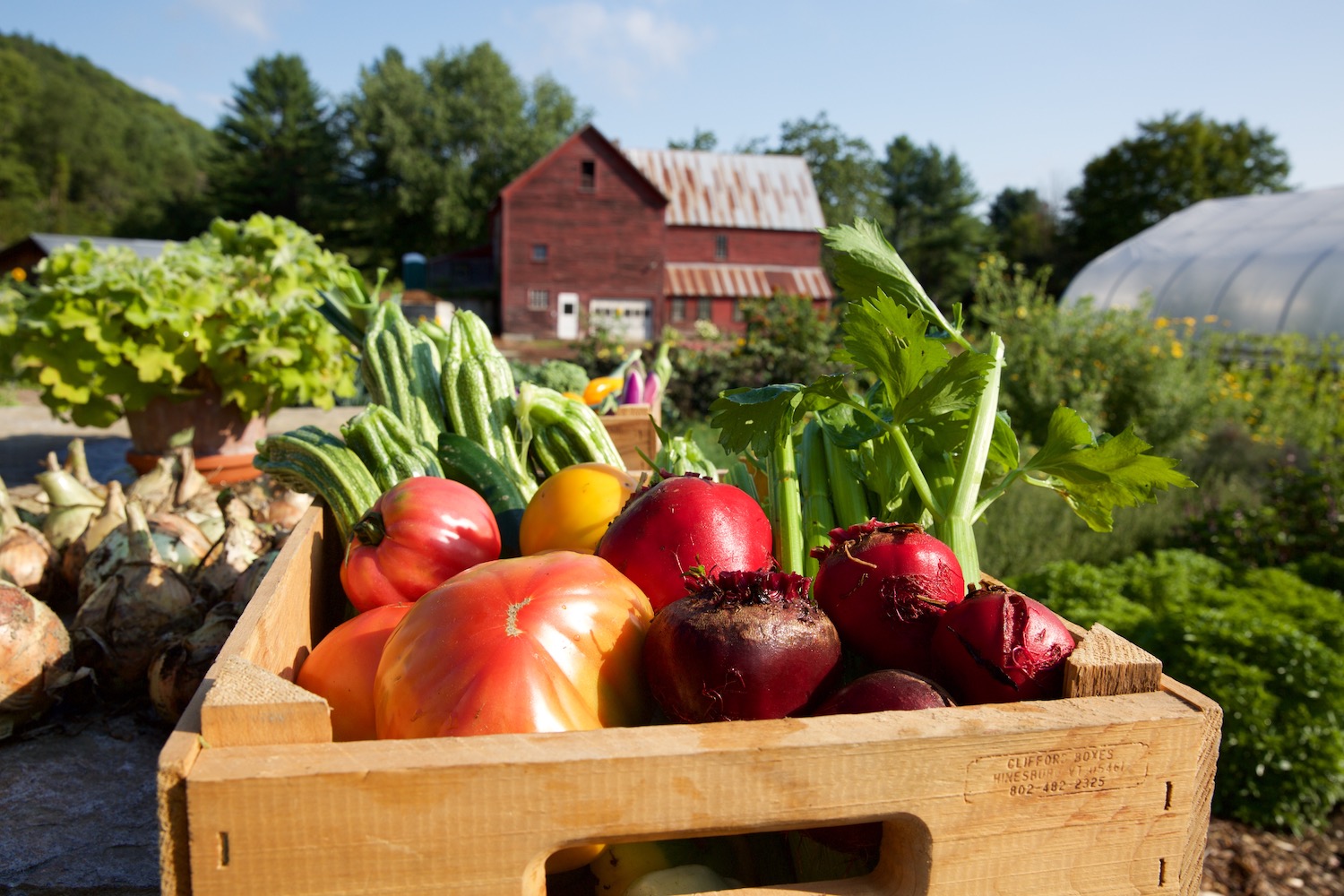
Where to Buy Seeds and/or Seedlings
Whether you’re starting your spring garden from scratch by planting seeds or prefer to purchase seedlings, the professional gardeners we spoke to all agree: buy organic. “You always want to buy organic because if you bought something that was fertilized non-organically and you stop giving it that fertilizer, you’re basically going to put the plants in shock and they’re not going to be very happy with you,” Hiers says.
If you have the time and resources to start growing from seed, it’s certainly a rewarding option. But if you live somewhere that has a cold spring and don’t want to drop a lot of money on grow lights to start them inside, then buying seedlings is probably your best bet. “Anything that you start on a windowsill is not really going to have six hours of direct sunlight,” Hiers says. “So barely anyone has the right conditions nationally to grow seed. I think the idea of starting seed on your own to save money can be true, but there’s also potentially a lot of investment [with all the equipment you have to buy].”
But obviously, if you have the space and supplies to grow from seed, go for it. Pauly and Heirs are based in Vermont, so they buy seeds from Vermont and Maine because the companies based in those states sell produce that will grow well in New England. So it makes sense to find a seed company in your region.
If you want to buy seedlings, there are a couple of options. “If you have a good nursery and you’re able to buy anything, that’s fantastic and that’s where you want to go,” Pauly says. But your local farmers market is also a great place to purchase seedlings — and get some guidance for spring gardening.
“Check in with your local farmers markets,” Merrifield says. “That’s where you’re going to get the very best advice, not only about cool, new things that they’re excited to grow, but also most farmers market vendors and gardeners are really passionate about what they do. They love to have those conversations.”
Eating Fruits and Vegetables Could Help Conquer Alzheimer’s
A new study suggests that compounds in our most colorful foods can help prevent dementiaSpring Gardening Tools and Gear
Unless you’ve been gardening for years, you’ll probably need some gear to start and maintain your garden. The first thing you should do is establish a budget because growing your own food can be expensive upfront. Plan out how many types of fruits and vegetables you want to grow and how much soil you need, work those costs into your budget, then decide what you want to spend on everything else. To help you get started, our gardening expert friends think this is some of the most essential gear.
Raised beds: If you don’t have the space or terrain for an in-ground garden, raised beds are a great option and also more ergonomic, as you won’t have to bend down as low. You, of course, could build your own, but for the less handy and more design-oriented, Vego’s coated steel garden beds are both beautiful and functional. “They’re modular and kind of a fun concept for raised beds if you have the space because you can have fun with the design and layout,” Pauly says. The Vego beds come in all shapes and sizes, but we’re partial to the 17” 10-in-1 kit for a smaller, one-and-done garden. If pests are an issue in your locale (which they’re sure to be), the combination cover and irrigation system is a good bet as well.
Composter: Now that you know the benefits of composting, you should definitely try it at home. The FCMP Tumbling Composter is durable, economical and easy to use and can turn your scraps into compost in as little as two weeks. If you have a bigger budget, Lomi is a sleek countertop device that can turn food scraps into plant food in less than four hours. It’s also odor- and pest-free. If you produce less food scraps than the average person, Vego’s In-Ground Worm Composter is a fairly hands-off way to compost. Bury two or three of them in your garden, add worms and your food scraps, and let nature do the rest.
Pruners: You’re going to be using pruners a lot, so it pays to invest in a solid pair. “Don’t get $20 cheap pruners from the garden store,” Pauly laughs. “Get FELCO pruners. They are nice and ergonomic, and having ergonomic tools is key.”
Stirrup hoe: If you’re growing plants in the ground and not in raised beds, Pauly and Hiers swear by the stirrup hoe, mentioning it will be “your best friend.” “It’s a game changer,” Pauly says. “Johnny’s Seeds makes fantastic ones with replaceable blades. It’s basically a hoe, but with a blade that goes around it. So when you slice the earth, the soil can go in through it. It’s the most efficient tool when standing up and hoeing a garden.”
Spade: Hiers says that a spade is one of his most-used gardening tools, and it makes sense why. They can help you turn soil, dig and pull up plants with ease.
Expert Tips, Trends and Things to Know for Popular Fruits and Veggies
Herbs
If you want to grow a garden but don’t even have an outdoor space, you can start a little herb garden on your windowsill, in containers on a fire escape or even in a small hydroponic kit like the Aerogarden. Not only do fresh herbs make all the difference when cooking at home, but snipping them yourself can save money — you only have to cut what you need, and nothing will go to waste.
Choose herbs depending on what you love to cook. If you’re always craving pasta with fresh pesto, grow basil. If roast chicken is a staple in your house, thyme is a no-brainer. And if you’re constantly mixing up cocktails at home, mint will take you far, especially in the summer months.
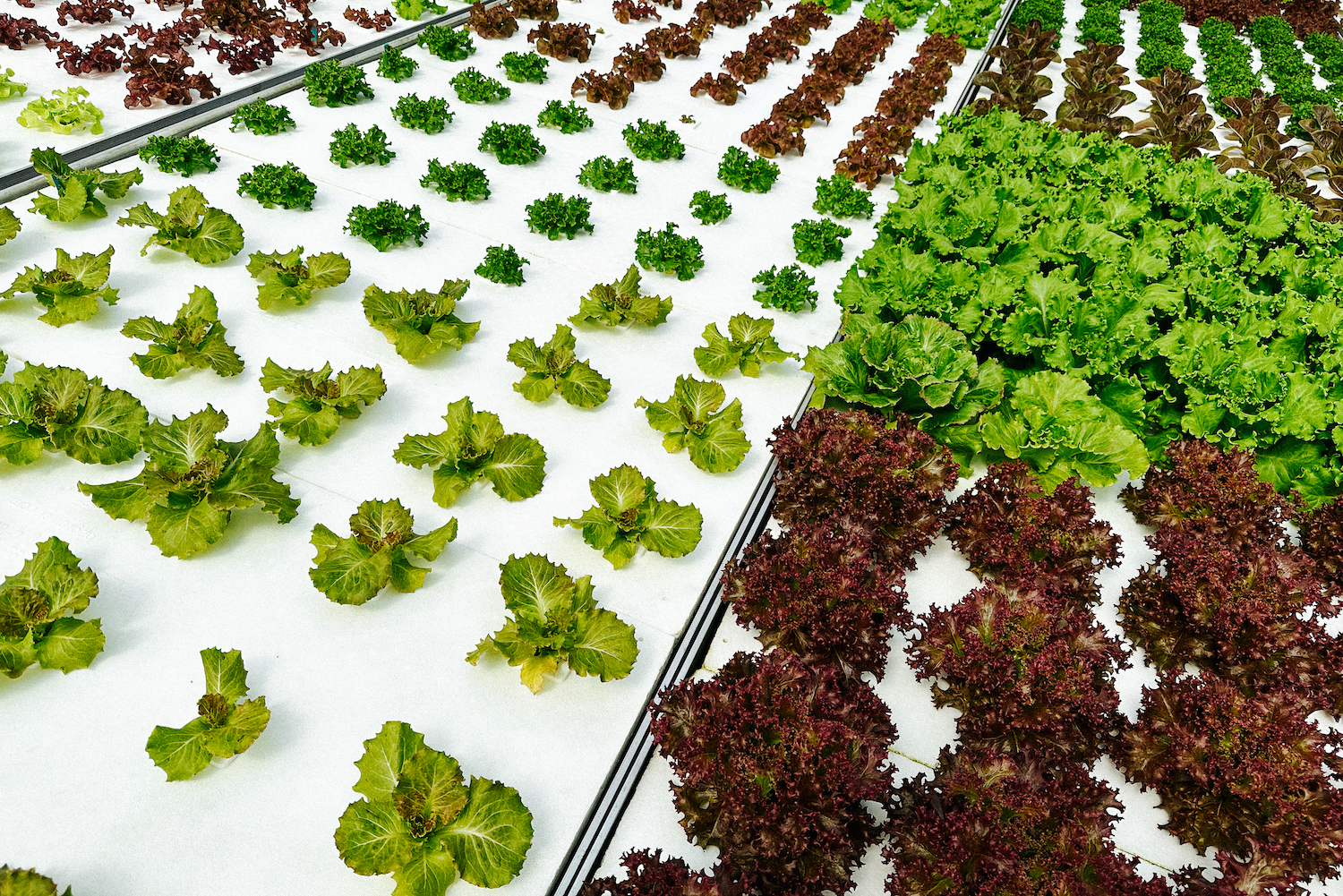
Microgreens
Microgreens are also a great crop to consider if you don’t have outdoor space. They are super nutrient dense; a 2019 study by the Journal of Agricultural and Food Chemistry found microgreens can be 40 times more potent in phytochemicals — which can do things like strengthen the immune system and reduce inflammation — than the mature versions of the plant. And they add a little pop of flavor and color to dishes like omelets, sandwiches, soups and just about anything else.
“Microgreens are easy and convenient to grow, as they don’t require much equipment or time,” says Rohan Maynard, the hydroponic farm manager at Aurora Anguilla. “All you need are good quality seeds, either sunlight or ultraviolet lighting (ideally for 12 to 16 hours per day), and a good growing medium, such as a container filled with potting soil or homemade compost. Alternatively, you can use a single-use growing mat specifically designed for growing microgreens.”
Maynard says that lettuce “is the easiest microgreen to grow for beginners,” but he notes that kale, spinach, radish, beet, chia, sunflower, buckwheat, amaranth and broccoli are all popular microgreen seeds that you can start growing right away. If you want to try it at home, follow Maynard’s step-by-step instructions below:
- Fill your container with potting soil, homemade compost or a single-use growing mat specifically designed for growing microgreens in shallow trays or 20-row flats, making sure you don’t over-compress. Water lightly.
- Sprinkle the seed of your choice thickly on top of the soil or media surface as evenly as possible.
- Lightly mist the seeds with water and cover the container with a plastic lid.
- Check on your tray daily, and mist water as needed to keep the seeds moist.
- A couple of days after the seeds have germinated, you may remove the plastic lid to expose them to light.
- Water once a day while your microgreens grow and gain color.
- After seven to 10 days, your microgreens should be ready to harvest, when they are ½ – 2 inches tall.
- Cut with scissors or a sharp knife and minimize handling to reduce damage.
Lettuce
Lettuce is always excellent to have on-hand, and cutting greens out of your garden will provide a much more flavorful salad than the often sad grocery store clamshells. And it’s fairly easy to manage, depending on the variety. “Lettuce is a pretty short-term crop, so most anywhere on our continent, you can start it early and then replant so you have multiple lettuce crops within your garden season,” Merrifield says.
If you’re having trouble deciding on a type, Merrifield suggests getting colorful and planting a bunch of different varieties. “Get a couple different packs [of seeds] and grow them all side by side,” he says. “That way, you can do a mini trial and see not only which one grows best, but which one you put into salads or sandwiches on a regular basis. You’ll find your favorite lettuce if you grow a few next to each other.”
Tomatoes
If you’ve ever tried to grow tomatoes before, you can likely attest that they’re a finicky fruit. They’re disease-prone and can get easily stressed out by environmental factors, so you have to make sure your growing conditions are right before investing in plants. And although Pauly says what we all know is true, that “heirloom tomatoes are the holy grail of summertime,” newbies can have much more luck with cherry tomatoes.
“[Even] in patio pots, cherry tomatoes are much more productive,” Pauly says. “They tend to be a little more disease resistant. So people who are on the fence about growing tomatoes might want to stay with cherry tomatoes because they’re much more vigorous.”
Merrifield also recommends trying one or two cherry tomato varieties in your garden, always making sure that the seeds or plants you’re procuring are an open-pollinated heirloom type for the most flavor possible. But if you want to branch out, he has some advice on how to choose a great tomato — and have some fun with it. “I’m looking for three things — that novelty factor, tomatoes with bright or weird colors; sturdiness and reliability; and that it comes from a well known producer. There’s nothing wrong with stocking your bench for success, so to speak. You’re building a team of plants, so let’s have them all be reliable all-stars.”
As for types, Merrifield suggests the Red Zebra and Wapsipinicon Peach if you want to try something new. “[The latter is] fuzzy on the outside and seems soft and almost rotten when you harvest it, but it’s got this delicious sweet flavor, like a peach,” he says. “It’s well named.” Hiers also says to browse TomatoFest for inspiration.
On a personal note, my dad has been growing tomatoes for decades. He suggests using Tomato-tone if your plants and/or their fruit are looking a little sad, as it helps to encourage plump, healthy tomatoes.
Peppers
There’s a reason why you typically find spicy food near the equator. Yes, because spice helps cool your body in hot temperatures, but peppers also thrive in warm weather. That doesn’t mean you can’t grow peppers in your spring garden this year, even if you live somewhere cooler.
If you’re looking for a sweet, bell-type pepper, Merrifield suggests King of the North, which does well in cool, short-growing seasons, hence the name. Shishito peppers are another winner, especially if you love eating them grilled and sauteed all summer long. “It’s a sturdy, squat little plant and it produces so well,” Merrifield says.
If you’re looking for something spicy, Merrifield says he sometimes gets emails asking about Joe’s Long Cayenne, which is great for eating fresh and also drying. He also recommends the paprika class of peppers, which originated in Hungary and can range from sweet to spicy. The Feher Ozon Paprika Pepper works if you’re looking for something mild, and the Hussli Tomato Pepper is great if you want to turn up the heat a bit.
Eggplant
Although the deep purple, waterlogged, American globe eggplants can be whipped into shape when cooked properly (and salted in advance so they sweat out some of that moisture), growing your own eggplant can open your world to a whole slew of different varieties you might not find in the grocery store. We’ve personally had good luck with Ichiban, or Asian, eggplants, and the Listada de Gandia are particularly beautiful and tasty.
Merrifield also suggests picking them while they’re young for the tastiest eggplant possible. “If you pick them as they’re getting into the zone of viability, then the plant can redirect that energy and you’ll just get more smaller eggplants,” he says. “Then the texture is better, and the sugars are more dialed in. When you let them get big, they get a little less tasty.”
Berries
If you have the space and the patience, a berry plant is a great way to get something sweet into your garden. You’ll get fruit from a strawberry plant the same season you plant it, and you can play around with both red and white varieties to add color to your spring garden. But if you’re looking for a medium to long-term spring gardening strategy, plants like blackberries and raspberries not only bear delicious fruit, but can work for landscaping as well.
“If you know you’re gonna be in your place, do borders with these things,” Merrifield says. “And before you know it, a few years have passed, and it feels so good to see them. And check in with that regional, local expert. Unless it’s just a berry farm, they’ll probably only be growing one or two types that really work for them.” This can offer insight on which berry plants could work best for you.
Spring Gardening Ergonomic Tips
Gardening is hard, physical work, there’s no doubt about that. “Don’t get me wrong, the first two weeks of gardening in the springtime, you’re gonna feel it,” Hiers laughs. So both he and Pauly suggested that I talk to Rebecca Nash, a doctor of physical therapy who has done seminars on ergonomic gardening. These are her top tips to keep in mind when starting and maintaining your garden so you don’t end the day with a sore back or pulled muscle:
- Use proper bending and lifting techniques. Lift slowly, keeping objects close to the body, and avoid twisting. Roll heavier loads or use a wheelbarrow instead of lifting all the weight yourself.
- Break up tasks to do a little each day. For example, weed and water on alternating days so you’re using different joints and muscle groups.
- Use ergonomic gardening tools. Look for textured, non-slip or wide grip, curved to the natural contour of hands, longer handles, two-handled tools and lightweight. Keep your tools sharp so you have to use less force.
- Change positions frequently — rotate between sitting, kneeling, half-kneeling and bending. Use a stool or bench instead of bending down for hours. Your knees and back will thank you at the end of the day.
- Use raised beds or pots to bring your plants closer to you.
- Don’t underestimate the power of a warm up and cool down! Stretch to stay flexible and strong.
Every Thursday, our resident experts see to it that you’re up to date on the latest from the world of drinks. Trend reports, bottle reviews, cocktail recipes and more. Sign up for THE SPILL now.
